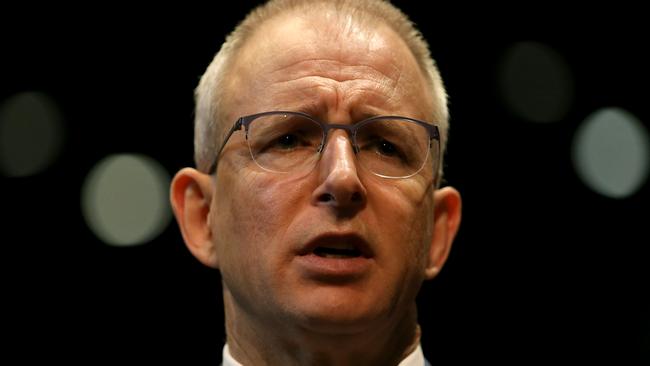Coalition’s NBN backflip will cost billions of dollars more
It was the NBN plan that the Coalition fought against for years. Now it has finally changed its mind, but it’s going to cost billions more.
Internet
Don't miss out on the headlines from Internet. Followed categories will be added to My News.
It’s being described as a “mega backflip”, “too late” and “a joke.”
Just seven years after Tony Abbott and Malcolm Turnbull scrapped Labor’s original national broadband rollout to deliver superfast speeds to the family home, it’s back.
Two million Australian households will be able to demand fibre-to-the-home internet by 2023 in suburbs across Australia under the Morrison Government’s new plan to be unveiled today.
RELATED: ‘Ultra fast’ NBN update on its way
It follows widespread concerns during the coronavirus pandemic over slow internet speeds and millions of Australians were forced to work from home.
The upgrade is expected to deliver a further eight million homes access to broadband speeds of up to one gigabit per second by 2023. Currently the mandatory minimum is 25 Megabits per second.
The only problem is the announcement by the Morrison Government today is billions of dollars more expensive than the original proposal the Coalition scrapped.
Labor was set to spend $45 billion on its original plan, while the Coalition will end up spending $51 billion.
Former Prime Minister Kevin Rudd, who has never stopped complaining about the decision to reverse his original policy, was quick to pounce.
“What a mega backflip on the part by Morrison,’’ he said.

“For 7 years they’ve botched my government’s 2009 plan for fibre to the premises, instead wasting billions with fibre to the mythical ‘node’, giving us the worst speeds in the world. Now this! What total policy frauds.”
But the reaction online from internet enthusiasts has been just as brutal on social media with users complaining it was “too late” and “a joke”.
Ten years ago this month, it was former Liberal leader Tony Abbott who promoted Malcolm Turnbull back onto the frontbench with a mission to “demolish” Labor’s NBN.
“The Government is going to invest $43 billion worth of hard-earned money in what I believe is going to turn out to be a white elephant on a massive scale,” Mr Abbott said at the time.
“I’ve already described it as school halls on steroids, and we can be certain the NBN will be to this term of government what pink batts and school halls were to the last term of government.

Mr Abbott, who declared he was “not a tech head”, suggested it was a policy for video gamers and people who wanted to watch home movies.
“We are not against using the internet for all these things, but do we really want to invest $50 billion worth of hard-earned taxpayers’ money in what is essentially a video entertainment system?’’ he said.
After the Liberal Party won the 2013 election, Mr Turnbull was responsible for the policy switch in government.
Communications Minister Paul Fletcher insisted today however that the demand among customers who were prepared to pay for superfast internet speeds wasn’t there 7 years ago.
“The 2013 decision by the Coalition to roll out the NBN quickly, then phase upgrades around emerging demand, has served Australia well,” Mr Fletcher said.
“The multi-technology mix was critical to getting the NBN rolled out as quickly as possible.
“When COVID hit, and millions of Australians shifted to working and studying from home, it was vital that we had good broadband as widely available as possible. If we’d stuck with Labor’s plan, it be would have been almost 5 million fewer homes.”
But Mr Fletcher said the connection would only be built if a customer ordered a high-speed plan, but there would be no upfront connection charge.
“Very importantly, it will be based on the principle of demand,” Mr Fletcher said.
“So we’ll roll the fibre down the street, but then the fibre lead into the home will only be built when there’s a customer order.”
Under the plan, the Morrison Government will also announce 130 zones including Rockhampton, Bunbury, Port Macquarie, Coffs Harbour, Mt Gambier and Devonport for upgrades with more to follow.
The zones were designated areas where there was a density of businesses within a “reasonable distance” of existing NBN infrastructure.
“For the first time, businesses outside capital city centres within these business fibre zones will have access to CBD zone wholesale prices, driving annual cost savings of between $1200 and $6000,” Mr Fletcher said.
But Labor’s communications spokeswoman Michelle Rowland said the new plan will involve duplicating both cost and time, to connect Australian businesses with fibre after the Liberals left them behind with copper.
“After spending $51 billion on a second-rate network, and wasting seven years, it turns out fibre is what Australian businesses needed all along,’’ she said.
“Labor welcomes this step and surely people are wondering — what on earth was the point of spending $51 billion of taxpayers’ dollars on the Liberals’ second-rate copper network to begin with?
“This has meant Australian taxpayers have paid more for a network that does less, and more money is now required to play catch up.”
Originally published as Coalition’s NBN backflip will cost billions of dollars more

